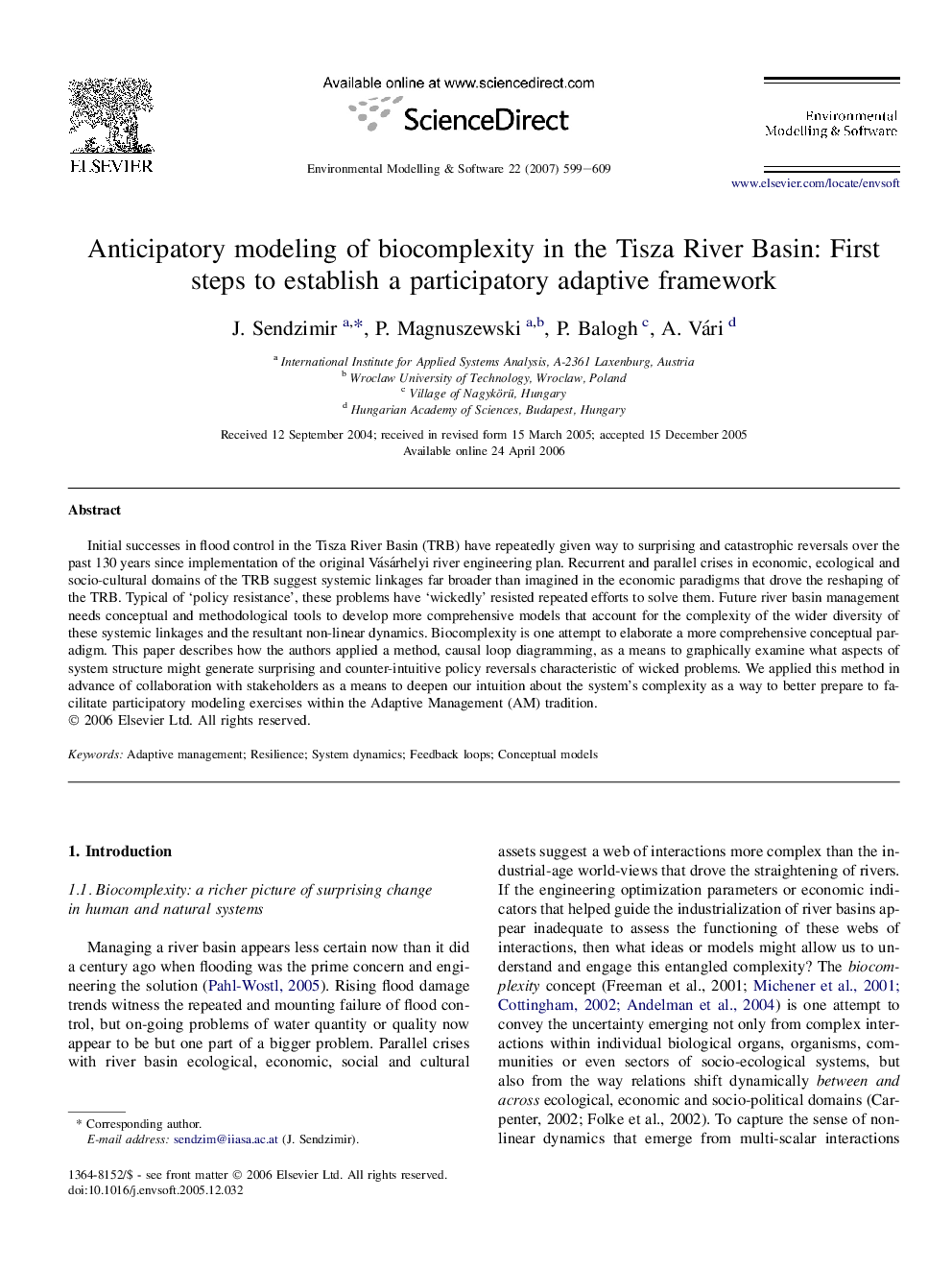| Article ID | Journal | Published Year | Pages | File Type |
|---|---|---|---|---|
| 570115 | Environmental Modelling & Software | 2007 | 11 Pages |
Initial successes in flood control in the Tisza River Basin (TRB) have repeatedly given way to surprising and catastrophic reversals over the past 130 years since implementation of the original Vásárhelyi river engineering plan. Recurrent and parallel crises in economic, ecological and socio-cultural domains of the TRB suggest systemic linkages far broader than imagined in the economic paradigms that drove the reshaping of the TRB. Typical of ‘policy resistance’, these problems have ‘wickedly’ resisted repeated efforts to solve them. Future river basin management needs conceptual and methodological tools to develop more comprehensive models that account for the complexity of the wider diversity of these systemic linkages and the resultant non-linear dynamics. Biocomplexity is one attempt to elaborate a more comprehensive conceptual paradigm. This paper describes how the authors applied a method, causal loop diagramming, as a means to graphically examine what aspects of system structure might generate surprising and counter-intuitive policy reversals characteristic of wicked problems. We applied this method in advance of collaboration with stakeholders as a means to deepen our intuition about the system's complexity as a way to better prepare to facilitate participatory modeling exercises within the Adaptive Management (AM) tradition.
